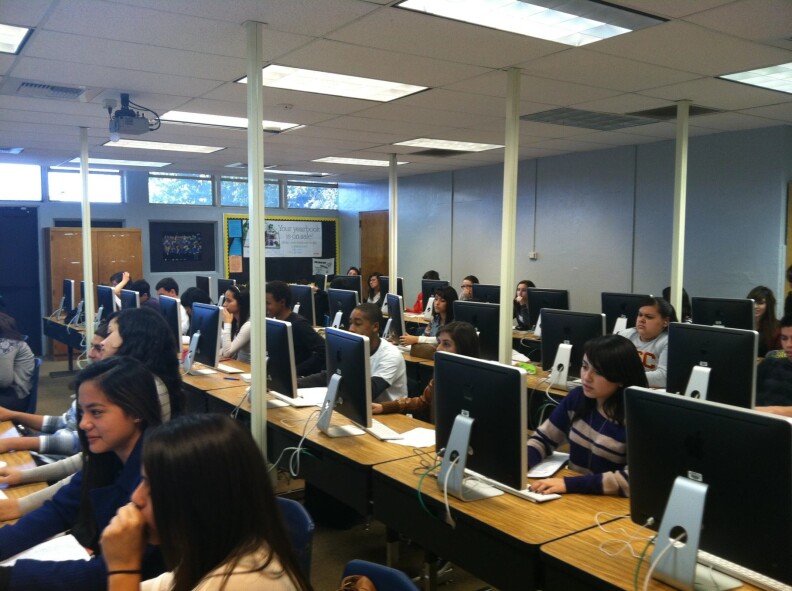As the old saying goes, "Those who don't learn history are doomed to repeat it."
But how do you teach that history, especially in a state that's home to people from all over the world?
It's a tough question and one that's been taken up by an educational advisory body in California.
The state's Instructional Quality Commission decided it's time for some changes when it comes to how history and social studies are taught in California classrooms.
Tom Adams, Deputy Superintendent of Public Instruction at the California Department of Education, joined Take Two to discuss.
Interview highlights:
Who determines how we teach history in California?
We have some guiding documents, one is our actual standards, and then two, the state legislature at times has passed laws that ask us to pay attention to particular topics. The most recent example is the Fair Education Act which asked us to look at the contributions of the LGBT community and the disabled in terms of how California and the United States developed.
California is home to 6.2 million public school students. Can you tell us about the overall composition of that population in terms of ethnic diversity and what role that plays in how people consider how we teach history here?
One of the important developments in educational practice is to make sure that our curriculum is culturally relevant. And in California that means actually ensuring that every student in the classroom can have someone that they can point to as contributing to the development of the United States or California or a role in world history.
So if you look at California with its rich diversity, we have Korean Americans, we have Persian Americans, we have Indian Americans, Sikh Americans, they've all wanted to participate in this process. And the great thing is we have a participatory process, and they've all come to us and provided suggestions on who should be there and what contributions they've made.
Can you give us some examples of the suggestions particular groups have made for changes to how history is taught in California?
If we take say the issue of World War II and some of the activities in the Pacific theater, one of the things that folks wanted us to pay attention to was the sexual slavery that occurred in World War II, specifically called the "comfort women," and this involved the Japanese army taking Korean women and forcing them to be sex workers during the war. And this was something that we knew about, but the fact that the community wanted to see it portrayed and be part of an 11th grade high school topic, that was important for people to recognize and be able to talk about it honestly.
Another example was what happened in the Philippines during World War II and the Bataan Death March, and how there were many Filipino soldiers who were part of the U.S. Army who wanted to be recognized for their contribution in resisting the Japanese occupation and fighting for American freedom.
Different people have different perspectives on the issue of "comfort women" and how history transpired, and the way that many Japanese people feel about this is very different than the way many Korean people feel about this, so how do you go about striking a balance?
The key here is, one, the curriculum framework has an inquiry approach, which means we really want these students to investigate these historical events, go to the primary sources, draw their own conclusions, do their own reports on this. So in this sense, you often start with the historical question, then search for the relevant evidence, and then come up with an interpretation that could be supported by the evidence.
One thing I just want to make sure [I include] here is while we did have debate about the "comfort women," it wasn't really whether it existed or not, in fact we said it was a historical fact. The question is how many, who, when, where, and who was behind it.
When was the state's teaching framework last updated? Was it in 2000?
Roughly, that's about it. And actually the textbooks in our classes were last approved in 2005, so we're looking at things that are well over 10 years old. And a lot has happened, and our definitions of what is inclusive have changed over time as more people have started to participate in the process.
What are next steps for these changes to be implemented?
The commission, having actually begun the work on this framework in 2008, then will take it to the State Board [of Education], and it's anticipated for action in July of this year. And then assuming that the State Board approves the framework and accompanying edits, we will actually begin the process of preparing for the review of instructional materials (or textbooks). And we actually hope to have a new list of state-reviewed textbooks in November of 2017.
To listen to the full interview, click the blue player above.



